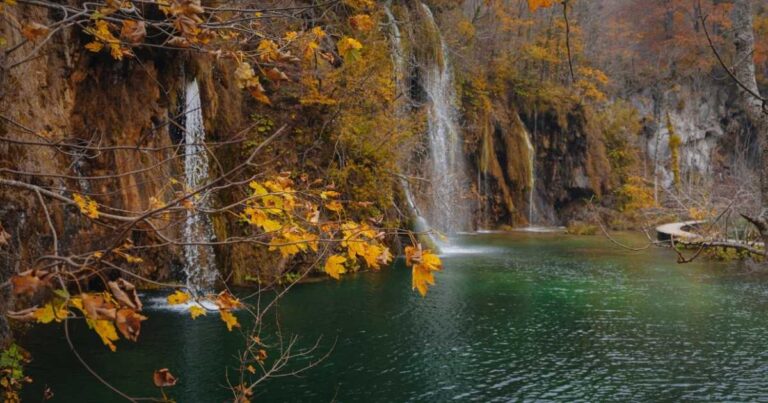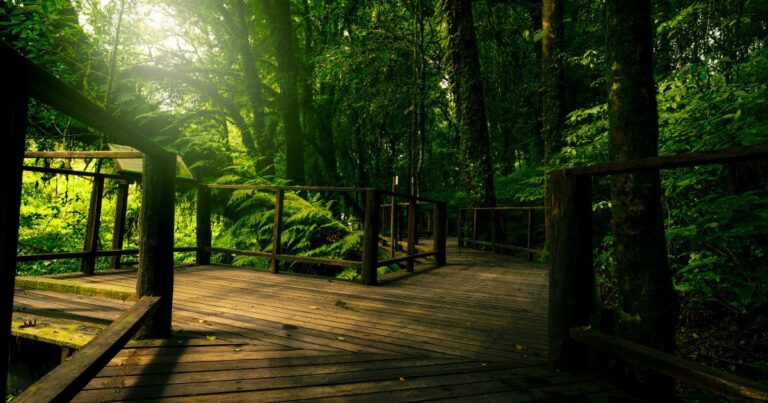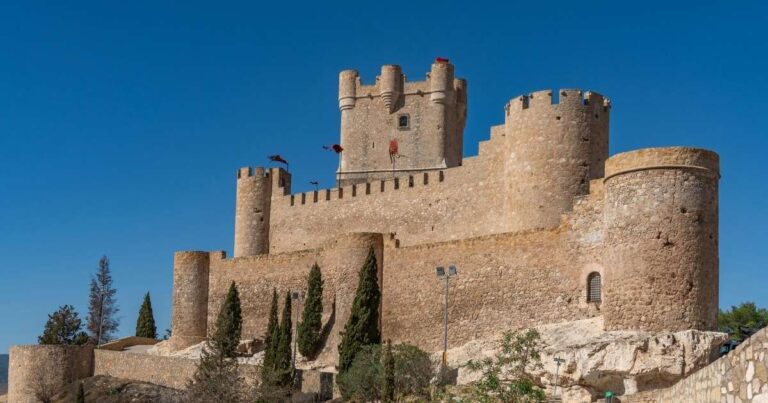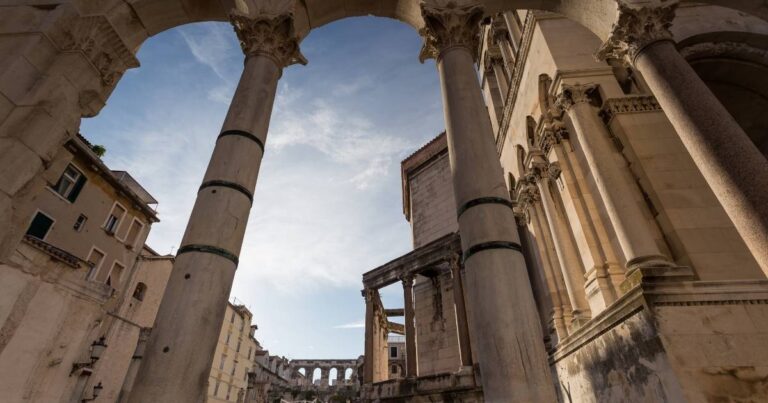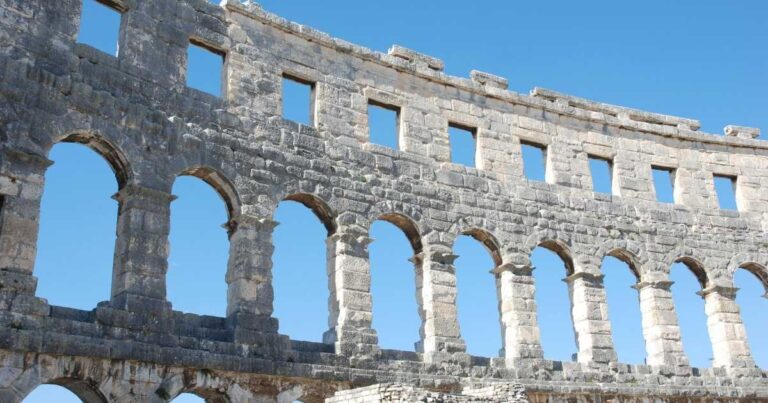Croatia has long been a darling of European travel, with its shimmering Adriatic coastline, historic cities, and postcard-perfect islands. Places like Dubrovnik, Split, and Hvar often steal the spotlight, drawing crowds with their undeniable charm. But what if you could peel back the layers of this stunning country and discover places that don’t make every guidebook’s front page? The hidden gems of Croatia offer a quieter, more intimate experience where you can connect with the land, its people, and its stories without elbowing through tourist throngs. Let’s embark on a journey to uncover the lesser-known corners of Croatia that deserve a spot on your travel radar.
Why Seek Out Croatia’s Hidden Gems?
Croatia’s popularity is no accident. Its blend of Mediterranean beauty, rich history, and vibrant culture is hard to resist. Yet, the well-trodden paths can sometimes feel like a conveyor belt of selfie sticks and crowded cafes. Seeking out hidden gems isn’t just about avoiding crowds; it’s about finding authenticity. These off-the-beaten-path destinations let you experience Croatia as the locals do, with unspoiled landscapes, family-run tavernas, and stories that haven’t been told a thousand times. Have you ever wondered what it’s like to wander a village where time seems to stand still? That’s the magic of Croatia’s lesser-known spots.
The beauty of these hidden places lies in their diversity. From misty inland forests to sleepy coastal hamlets, each offers a unique slice of Croatian life. You might stumble upon a festival in a tiny town or share a glass of homemade wine with a vineyard owner. These moments feel personal like you’ve been let in on a secret. Additionally, exploring these areas often means supporting small communities where tourism isn’t the primary driver of the economy.
Istria’s Hilltop Villages: A Taste of Medieval Magic
Motovun: The Truffle Haven
Perched atop a hill in Istria, Motovun is the kind of place that makes you feel like you’ve stepped into a fairy tale. This medieval village, often overshadowed by Rovinj’s coastal allure, is a maze of cobblestone streets and stone houses, all wrapped in a blanket of rolling vineyards and olive groves. What sets Motovun apart? It’s the heart of Croatia’s truffle country. The surrounding forests are a treasure trove of black and white truffles, and local restaurants serve dishes that elevate this earthy delicacy to new heights.
Visiting Motovun feels like a journey back in time. You can wander the ancient walls, soak in panoramic views of the Mirna Valley, or sip coffee at a tiny cafe where the owner knows every patron by name. If you’re lucky enough to visit in late summer, the Motovun Film Festival transforms the town into a cultural hub, with open-air screenings under the stars. It’s intimate, unpretentious, and utterly charming. Why settle for crowded coastal cities when you can savor truffle pasta in a hilltop village?
Grožnjan: The Artists’ Retreat
Just a short drive from Motovun lies Grožnjan, a pint-sized village that pulses with creative energy. Known as the “town of artists,” Grožnjan is a haven for musicians, painters, and sculptors, especially during the summer when its streets hum with jazz festivals and art workshops. The village’s stone houses, adorned with colorful shutters, line narrow alleys that beg to be explored. Every corner seems to hide a gallery or a studio, and you might find yourself chatting with an artist about their latest work.
What makes Grožnjan special is its balance of liveliness and tranquility. You can spend a morning browsing handmade ceramics, then retreat to a quiet courtyard for a glass of Istrian Malvazija wine. The village’s small size means you can see it all in a day, but its atmosphere will linger with you long after you leave. Have you ever felt inspired just by walking through a place? Grožnjan has that effect.
The Untouched Beauty of Gorski Kotar
Risnjak National Park: A Wilderness Escape
While Plitvice Lakes and Krka National Park dominate Croatia’s nature scene, Risnjak National Park in Gorski Kotar remains a well-kept secret. Tucked away in the mountainous region near Rijeka, this park is a paradise for hikers, birdwatchers, and anyone craving solitude. Dense forests, crystal-clear streams, and rugged peaks define the landscape, which is home to elusive wildlife, including lynx, bears, and chamois. The air here feels fresher, the silence deeper.
Hiking trails in Risnjak range from gentle strolls to challenging ascents, with the Veliki Risnjak peak offering jaw-dropping views. Unlike more famous parks, you’re likely to have the trails mostly to yourself, giving you space to breathe and connect with nature. Imagine standing on a mountaintop, surrounded by nothing but forest and sky. Isn’t that the kind of escape we all need sometimes?
Fužine: Lakes and Legends
Nearby, the village of Fužine is a gateway to Gorski Kotar’s outdoor wonders. Nestled between lakes and forests, it’s a haven for kayaking, cycling, and fishing. Fužine’s charm lies in its simplicity: cozy guesthouses, hearty home-cooked meals, and locals who greet you like an old friend. The village is also steeped in folklore, with tales of fairies and hidden treasures whispered among the trees.
One of Fužine’s highlights is the Vrelo Cave, a small but striking cavern you can explore in just 20 minutes. Its illuminated stalactites and underground stream feel like a secret only you’ve uncovered. After a day of adventure, settle into a local konoba for a plate of venison goulash, a regional specialty. Fužine proves that you don’t need glitz to create unforgettable memories.
Dalmatia’s Quiet Corners
Vis Island: A Slice of Old-World Charm
While Hvar and Brač draw the yachting crowd, Vis Island remains Dalmatia’s best-kept secret. This remote island, once a military base, has stayed under the radar, preserving its authentic character. Its two main towns, Vis Town and Komiža are worlds away from the party scene of other islands. Think fishing boats bobbing in harbors, stone houses draped in bougainvillea, and beaches that feel like your own private paradise.
Komiža, in particular, is a gem. Its waterfront is lined with family-run restaurants serving fresh seafood, like octopus peka cooked under a bell-shaped lid. From here, you can take a boat to the Blue Cave on Biševo Island, a natural wonder where sunlight creates a glowing azure effect. Vis is also a haven for wine lovers, with vineyards producing the crisp Vugava white wine. Why chase the crowds when you can sip wine on a quiet island?
Lastovo: Nature’s Sanctuary
Even further off the beaten path is Lastovo, an island so remote it feels like the edge of the world. Part of a protected nature park, Lastovo is a haven of unspoiled beauty, with dense forests, hidden coves, and a starry sky unmarred by light pollution. The island’s main village, Lastovo Town, is an amphitheater of stone houses and ancient churches, where traditions like the Poklad carnival still thrive.
Lastovo is perfect for travelers seeking peace. You can hike to secluded beaches, dive in crystal waters, or sit on a terrace with a coffee, listening to the hum of cicadas. The island’s isolation has preserved its way of life, making it a place where you can truly disconnect. Have you ever dreamed of escaping to a place where time slows down? Lastovo is that place.
Inland Treasures: Slavonia’s Soul
Kopački Rit Nature Park: A Wetland Wonderland
Slavonia, in Croatia’s east, is often overlooked in favor of the coast, but it’s home to some of the country’s most unique landscapes. Kopački Rit Nature Park, situated near Osijek, is one of Europe’s most extensive wetlands, a diverse landscape comprising marshes, lakes, and forests teeming with a wealth of wildlife. Birdwatchers flock here to spot herons, eagles, and storks, while boat tours offer a front-row seat to the park’s beauty.
What makes Kopački Rit special is its raw, untamed feel. You’re not just observing nature; you’re immersed in it. The park’s wooden walkways let you explore without disturbing the ecosystem, and local guides share stories of the region’s history and biodiversity. After a day here, you’ll wonder why more people don’t sing Slavonia’s praises.
Vukovar: History and Resilience
Vukovar, also located in Slavonia, is a town with a heavy yet inspiring history. Known for its role in Croatia’s 1990s war, Vukovar has rebuilt itself into a place of peace and reflection. The town’s baroque architecture, like the Eltz Manor, and its riverside promenade along the Danube invite quiet contemplation. Museums, such as the Vukovar Hospital Museum, offer a poignant look at the town’s past.
Yet Vukovar isn’t defined solely by its history. Its wineries, producing robust Graševina wines, and its warm, welcoming locals give it a vibrant spirit. Visiting Vukovar feels like paying homage to resilience while discovering a lesser-known side of Croatia. Isn’t it remarkable how a place can turn pain into beauty?
The Kvarner Gulf’s Forgotten Islands
Cres: Wild and Free
In the Kvarner Gulf, Cres Island is a rugged, sparsely populated paradise. Its northern half is a habitat for griffon vultures, while the south boasts olive groves and secluded beaches. The town of Cres, with its Venetian architecture and sleepy harbor, feels like a step back in time. You can spend your days hiking to hidden coves or exploring the Tramuntana forest, a biodiversity hotspot.
Cres is also home to Lake Vrana, a freshwater mystery whose depth remains unknown. Locals share legends about the lake, adding to its allure. Whether you’re kayaking, birdwatching, or simply soaking in the silence, Cres offers a raw, unfiltered connection to nature. Why not trade crowded resorts for an island that feels like yours alone?
Lošinj: The Island of Vitality
Neighboring Cres, Lošinj, is known as the “island of vitality” for its clean air and aromatic herbs. The towns of Mali Lošinj and Veli Lošinj are charming, with pastel-colored houses and waterfronts perfect for evening strolls. Lošinj’s beaches, like Čikat Bay, are less crowded than those on more popular islands, and its dolphin-watching tours are a highlight.
Lošinj also has a rich maritime history, with museums showcasing its seafaring past. The island’s microclimate makes it a year-round destination, ideal for wellness retreats or active holidays. Imagine breathing in pine-scented air while watching dolphins leap in the distance. Doesn’t that sound like paradise?
Tips for Exploring Croatia’s Hidden Gems
Traveling to Croatia’s lesser-known spots requires a bit of planning, but the rewards are worth it. Renting a car is often the best way to reach remote villages and islands, giving you the freedom to explore at your own pace. Ferries connect the mainland to islands like Vis and Lastovo, but check schedules in advance, as they can be less frequent. For inland destinations like Gorski Kotar or Slavonia, consider staying in family-run guesthouses for a more personal experience.
Timing your visit can also enhance your trip. Spring and autumn offer mild weather and fewer crowds, making it easier to enjoy places like Risnjak or Motovun. Always carry cash for small establishments, as card payments aren’t universal in rural areas. And don’t be afraid to chat with locals; their recommendations often lead to the best discoveries. Have you ever found a hidden spot just by following a local’s tip? It’s like striking gold.
Why These Gems Matter
Croatia’s hidden gems aren’t just beautiful places; they’re a reminder of what travel can be. In a world of Instagram checklists and overcrowded landmarks, these destinations offer something rare: authenticity. They invite you to slow down, to listen to the stories of a place, to taste its flavors, and to feel its heartbeat. Whether it’s the misty trails of Risnjak, the stone alleys of Grožnjan, or the starry skies of Lastovo, these spots show you a Croatia that’s raw, real, and unforgettable.
Exploring these places also supports communities that rely on sustainable tourism. Your visit to a family-run winery or a village taverna helps preserve Croatia’s cultural and natural heritage. It’s a chance to leave a positive impact while creating memories that feel deeply personal. Isn’t that what travel is all about?
Conclusion: Your Croatian Adventure Awaits
Croatia’s hidden gems are more than just destinations; they’re invitations to discover a side of the country that’s often overlooked. From the hilltop villages of Istria to the wild islands of the Kvarner Gulf, these places offer a chance to connect with Croatia’s soul. They’re where you’ll find quiet moments, warm hospitality, and stories that stay with you long after you’ve left. So, the next time you plan a trip to Croatia, skip the usual suspects and venture off the beaten path. Your adventure is waiting, and it’s going to be one for the books.
FAQS
Q1: What’s the best way to get to Croatia’s hidden islands like Vis or Lastovo?
You’ll need to take a ferry from Split or Dubrovnik. Jadrolinija operates regular routes; however, schedules vary by season, so please check ahead for the most up-to-date information. Renting a car for mainland travel and then hopping on a ferry is an excellent combo for flexibility.
Q2: Are Croatia’s hidden gems suitable for families with kids?
Absolutely. Places like Fužine or Lošinj offer outdoor activities, such as hiking and kayaking, that kids love, along with safe, uncrowded beaches. Just plan for simpler accommodations and pack snacks for remote areas.
Q3: When is the best time to visit Croatia’s lesser-known spots?
Spring (April to June) and autumn (September to October) are the ideal seasons. You’ll get pleasant weather, fewer tourists, and vibrant local festivals, especially in places like Motovun or Grožnjan.
Q4: Do I need to speak Croatian to explore these hidden areas?
Not at all. Many locals in tourist-friendly spots speak English, especially younger people. A few basic Croatian phrases can go a long way, but smiles and gestures work wonders, too.
Q5: How can I support local communities while visiting these places?
Stay in family-run guesthouses, eat at local tavernas, and buy handmade crafts or produce. Engaging with small businesses, such as wineries in Slavonia or artisans in Grožnjan, directly benefits the local community.



